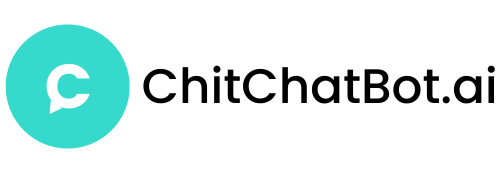Custom fields are a powerful feature in app.chitchatbot.ai that allow you to collect and store specific information from your users during conversations. Whether you’re gathering contact details, preferences, or other relevant data, custom fields help you tailor your chatbot interactions to meet your business needs.
This guide will walk you through how to create, manage, and use custom fields effectively in app.chitchatbot.ai.
What Are Custom Fields?
Custom fields are user-defined data points that your chatbot can collect and store during a conversation. These fields can be used to personalize interactions, segment users, or integrate with other tools like CRMs or email marketing platforms.
Custom Field Data Formats
Custom field data can be stored in different formats such as:
- Text (10,000 characters)
- Long Text (1M+ characters)
- Number
- Date
- Date & Time
- True/False
Example Uses
For example, you might use custom fields to:
- Collect a user’s name, email, or phone number.
- Ask for their preferences (e.g., product interests or subscription type).
- Store specific details like order numbers or booking dates.
How to Create a Custom Field
1. Go to the Custom Fields Section
Navigate to Menu > Flows > Custom Fields.
2. Add a New Field
Click on “Add Custom Field” and provide the following details:
- Field Name: Choose a descriptive name (e.g., “personal_zip”).
- Field Type: Select the type of data you want to collect (e.g., text, number, date, etc.).
- Description: (Optional) Adding a description can help manage multiple custom fields effectively.
3. Create the Field
Once configured, save/create the custom field. It will now be available for use in your chatbot flows. If you can’t see it, refresh your page.
Using Custom Fields in the Chat Flow
After creating a custom field, you can integrate it into your chatbot conversations. You can also create custom fields while building a chat flow instead of going directly to the custom fields section.
1. Add a Question or Prompt
In your chatbot flow, add a message or question that asks for the information you want to collect (e.g., “What’s your zip code?”). Utilize the “Get User Data” message type to gather this input from your subscribers.
2. Link the Custom Field
Click on the “Edit” button to configure the custom field wizard.
3. Store and Use the Data
Now, choose the custom field if you had created it already, or create a new custom field directly in the wizard. The collected data will be stored in the user’s profile and can be used later in the conversation or exported for further analysis.
Real-World Use Cases
Here are some practical examples of how custom fields can be used:
- Lead Generation: Collect contact details like name, email, and phone number to follow up with potential customers.
- E-commerce: Ask for product preferences or sizes to recommend suitable items.
- Customer Support: Gather order numbers or booking references to provide personalized assistance.
- Surveys and Feedback: Use custom fields to ask specific questions and store responses for analysis.
Expert Tips for Using Custom Fields
- Keep It Simple: Only ask for essential information to avoid overwhelming users.
- Use Validation: Ensure data accuracy by setting validation rules (e.g., email, phone, required fields).
- Personalize Responses: Use the collected data to tailor follow-up messages (e.g., “Hi {{first_name}}, thanks for sharing your email!”).
- Use Conditional Logic: You can use the condition block within your chatbot flows to redirect users to specific flows or messages based on custom field entries.
Common Mistakes to Avoid
- Overloading Users: Asking for too much information at once can lead to drop-offs.
- Incorrect Field Types: Choose the right field type (e.g., text for names, number for phone numbers) to avoid data errors.
- Ignoring Validation: Without validation, you may end up with incomplete or incorrect data.
- Not Testing: Always test your chatbot flows to ensure custom fields work as expected.
- Mixing Up Custom and System Fields: Custom fields are user-defined and tailored to specific needs, while account/system fields are predefined and essential for core platform functionality. For example, a custom field could store a subscriber’s personal phone number, while a system account field might hold your business phone number, which is displayed across multiple sections of the chatbot. If your number changes, you only need to update it in one place.





